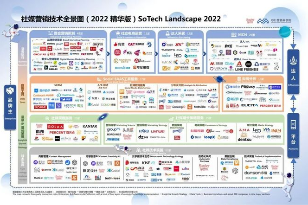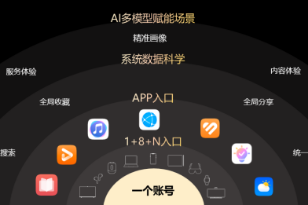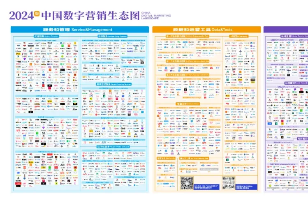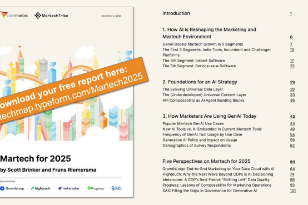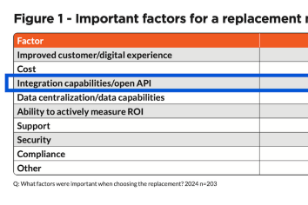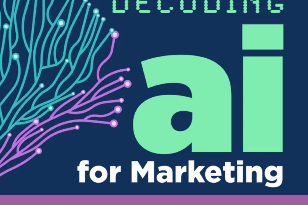「Future AI Talk」 is a dialogue program co-sponsored by Marteker and Digital Frontier to explore the impact of the rise of generative AI on pan-marketing technology and marketing automation, in order to help the entire industry explore a new marketing path in the era of AIGC.

Interviewee: Li Zhe, Vice-president of Sinobase
Q: How do you understand AIGA (Generative Automation)?
Li Zhe: The soil in which AIGA and AIGC grow and the nutrients they get are not equal. AIGC can get a lot of nutrition from the public domain in the Internet environment to feed its model and results. And AIGA in the B2B and B2C two major business areas, at least in the B2B business area, the growth soil is somewhat poor. AIGA is based on GPT or other models, which requires a lot of data to train. In fact, the model is fixed. The most important part is pre-trained, which requires a large amount of data for the model to practice. In the field of B2B business, a large amount of data is actually in the hands of B2B enterprises themselves, which is private, not open, and cannot be invested in training. From the perspective of productivity and production relations, this means of production is equivalent to data, which is mastered by various enterprises but not released, and producers cannot deal with it. The large model is not trained, and the results are not close to the actual application scenarios, so it can not meet the needs of users.
Q: Would it be possible for companies to contribute their own data for training?
If each enterprise trains itself, it faces another problem, many enterprises do not have enough data, far from reaching the magnitude of big data, which is not enough for training. I once worked with an AI expert and obtained a lot of public data such as business statistics and tried to train. I provide two sets of data. One set of data has been validated and identified as MQL and SQL for the training of the model. The other is a large batch of unlabeled data that is used to validate the model. Results The data distribution of validation group was very uniform, and the accuracy of anchoring sales leads was not ideal. Experts suggest that the result is a lack of data dimension and volume. We were talking about collaborative models, and from my point of view, a lot of dimensions and data had been released; Other B2B companies may not be so open. However, it is not feasible to use general algorithms to score sales leads. It's really a matter of not having enough data ready.
If we learn from the B2C industry, the data needs to reach the 100 million level to produce valuable results. The data dimension is also important. Different dimensions, especially business people's perception of the industry, can be presented digitally, which is also a particularly challenging work. These things actually need to be trained by the model.
Even in many of the organizations I've talked to, the digitalization is not so thorough, and many business-level knowhow is not preserved in a digital way. In such cases, AI may not be able to play a large enough role. Of course, the direction of AIGA is very attractive, but compared to AIGC, there are challenges. How to share data among enterprises, train and feed together is a topic that needs to be discussed.
Q: In the application of marketing scenarios, what revolutionary changes will AI marketing have compared with traditional marketing methods? What disruption will it bring to marketing techniques and tools?
Li Zhe: We do MA now based on human cognition. Domestic enterprises, whether foreign-funded or private enterprises, are using the traditional idea of the leader from top to bottom management, the vision and cognition of the leader determines the layout of the business, of course, the leader can decide the rules and strategies of MA according to the experience of a small number of subordinates. Most of the time, MA planning is rule-based, that is, rule-based mode. From the perspective of algorithm, it is not a rule-based but data-driven model, which constantly uses previous data to optimize iteration.
Of course, we say that the leader is also based on the previous report and other data analysis, but after all, the processing speed is slow compared to the machine, even Excel speed is limited. However, artificial intelligence can complete the calculation of massive data instantly, and the efficiency will become very high.
Of course, the difficulty of AIGA is also greater, at the beginning we promoted MA to drive traditional marketing, just let marketers accept and learn this technology, and when MA develops to AIGA, the supply of "raw materials" is very important, there must be enough means of production to make productivity burst out, otherwise there is no oil engine, the car can not move forward in any case. Therefore, AIGA is necessarily the direction of MA, provided that the data dilemma is solved.
As far as the B2B industry I am responsible for is concerned, it is a personalized industry, which includes both the individuation of the industry and the individuation of the enterprise. To apply IT theory, that is, from the concept of computing center and edge, AI in B2B enterprises now mainly plays a role and improves efficiency at the edge level, including design, content, and so on. The focus or development trend of AI development is how to play a role in the center and become the central force.
Q: What conditions need to be met for AI to perform as well as it should?
Li Zhe: In addition to the data readiness mentioned just now, the depth and breadth of enterprise digitalization. Originally, many enterprises thought that the digital transformation of marketing was not difficult, that digital transformation was only the application of digital marketing, and set up departments within the enterprise to be exclusively responsible for digital work, and nothing more. In fact, what digital transformation should do is to digitize every marketing link. Taking offline activities as the most common scenario, many may think that the digitalization of check-in, questionnaire, interactive lottery and other links has completed the construction of the digital marketing system of offline activities; In fact, the essence of offline activity is the interaction, thoughts and judgments between people during the activity, which is not actually digital.
After the end of the epidemic, the frequency of offline activities soared, and the sales and business personnel of enterprises finally had the opportunity to communicate with customers face to face. But all the results of their communication, the information in the communication process, are not preserved in a digital way. That's part of what I don't think is deep. Of course, with the existing technical conditions and legal provisions, this step is difficult to go through, but we have to realize that this is not the part of digitalization, whether it is AIGA or AIGC, there is a lack of a very important dimension and production means of supplement, which is an inevitable challenge.
In contrast, in the field of customer service, every communication between bank customer service and customers is recorded and processed by NLP technology, and the prediction and judgment will be very accurate. I think the data supplement and the supply of data production means are very timely and perfect, so the results will be very good. However, in the B2B field, most business processes are not digitally presented and retained, and AI judgments are bound to be biased. In fact, the realization of digitalization in all aspects and every link of the enterprise is a very big project and challenge. But only the deeper the digitization, the higher the possibilities of AIGA and the value of the results produced.
Q: When will the AI-dominated era arrive?
Li Zhe: It has a lot to do with the degree of digitalization. Although the industry has been talking about digital transformation, many industries or enterprises have not really taken action and are still in a relatively preliminary state. If the digital maturity is relatively high, and there is a data foundation, there will certainly be an acceleration process.
In terms of the development prospects of AI, there will be two paths from top to bottom and from bottom to top. From top to bottom depends on the state policy, and from bottom to top depends on social development. College students actually understand and adapt to AIGC very well, and after they graduate, they will supply the society with a wave of talent resources to embrace AI, and the training of AI will accelerate, and lead others to enter the system with AI as the architecture.
in addition, if Chinese marketing can do All in AIGC, it can really produce AIGA, which is a silent feeding process, so that enterprises can virtually digitize their knowhow and so on. However, we also need to note that there are differences in the current attitude of marketing and operation personnel to embrace AIGC, and some of them are excluded or cautious. As far as my observation is concerned, designers are very dependent on AI, because they have a confidence that AI design works lack soul and need designers to achieve finishing touches. However, content personnel often feel that the results produced by AI are not very different from the ones he makes, and the AI traces are obvious, there will be a grudge, so that the relevant AI lacks enough training. If all the people involved in marketing do a lot of training on a model, it is possible to produce unexpected results.





 Marteker .2024-02-21 09:51.阅读量.1015
Marteker .2024-02-21 09:51.阅读量.1015